The Majestic Moai: Guardians of Easter Island (circa 1400-1650)
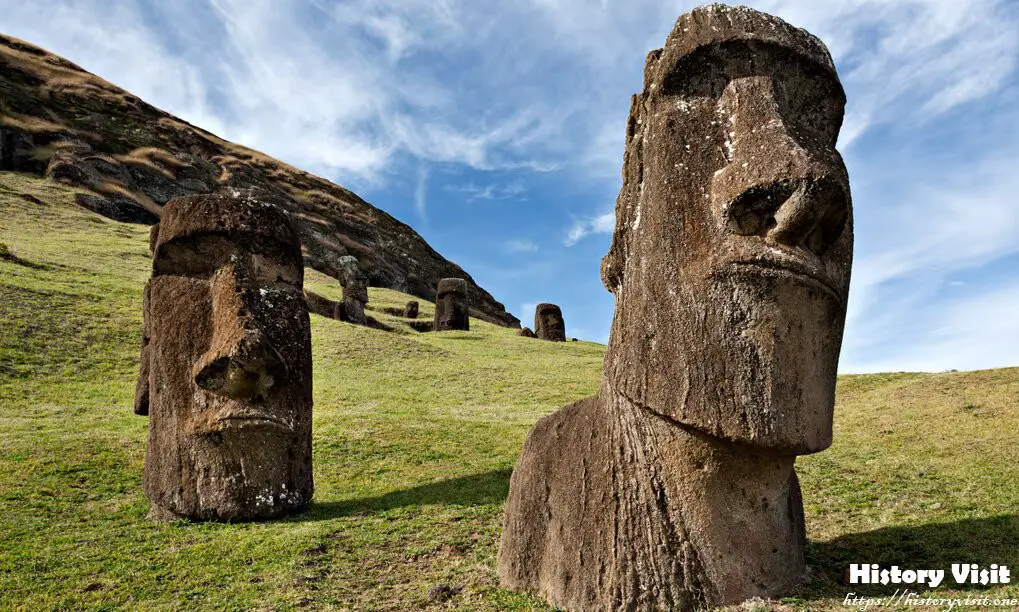
Introduction
Easter Island, known as Rapa Nui to its indigenous people, is one of the most isolated inhabited islands in the world, located in the southeastern Pacific Ocean. Despite its remoteness, it holds an incredible cultural and historical treasure: the Moai statues. These monolithic human figures, carved by the Rapa Nui people between circa 1400 and 1650, have fascinated archaeologists, historians, and tourists alike for centuries.
The Moai statues are not merely artistic achievements; they are deeply entwined with the spiritual and social fabric of the Rapa Nui civilization. Standing tall and often gazing inland, these statues are believed to represent the deified ancestors of the islanders, symbolizing power and protection. The construction of these statues reflects the complex societal structure and impressive ingenuity of the Rapa Nui people.
This article delves into the rich history, construction techniques, symbolic significance, and modern preservation efforts surrounding the Moai statues. Through understanding these silent sentinels, we gain insight into the remarkable civilization that created them and the enduring legacy they have left behind.
Historical Background
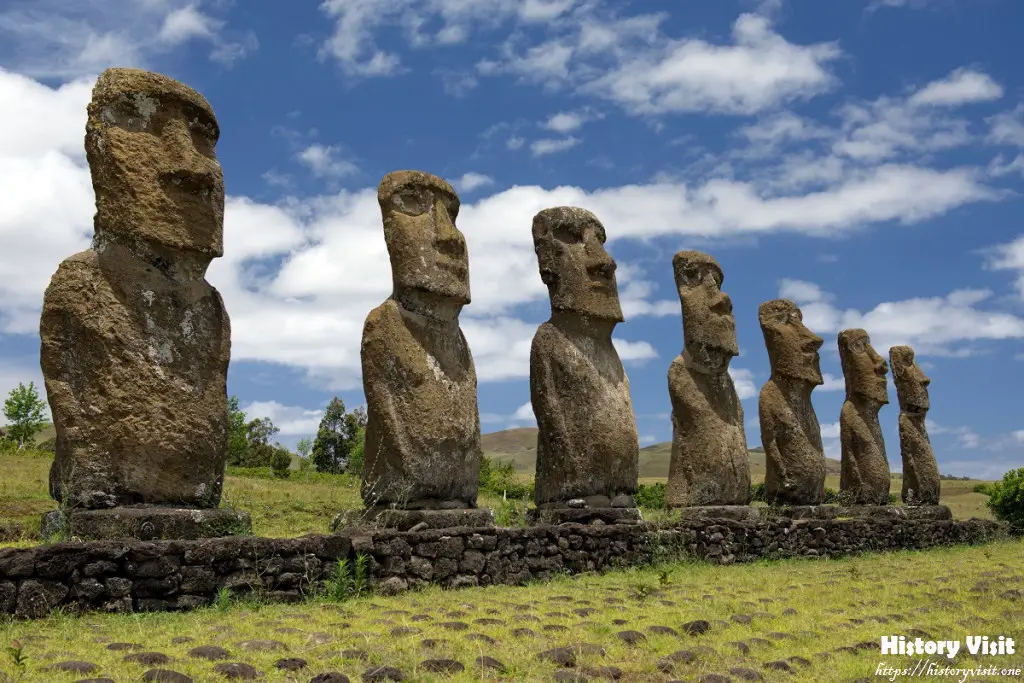
The construction of the Moai statues began around 1400 AD, during a period when the Rapa Nui civilization was flourishing. The Rapa Nui people are believed to have settled on the island around the 12th century, developing a unique culture that thrived despite the island’s limited resources. The Moai, numbering nearly 1,000, were erected over the span of several centuries, marking a significant era in the island’s history.
The Rapa Nui society was organized into clans, each led by a chieftain who held both political and religious authority. The Moai were commissioned by these leaders to honor their ancestors, believed to possess the spiritual power, or mana, that could protect and bring prosperity to the clan. This practice underscored the importance of lineage and ancestry in Rapa Nui culture, with each clan striving to build larger and more impressive statues.
The historical significance of the Moai extends beyond their physical presence. They represent the apex of the Rapa Nui’s socio-political and religious structures. As a civilization that relied heavily on its social cohesion and spiritual beliefs, the creation of the Moai statues is a testament to the Rapa Nui’s ingenuity and resilience in the face of environmental challenges and isolation.
Construction of the Moai
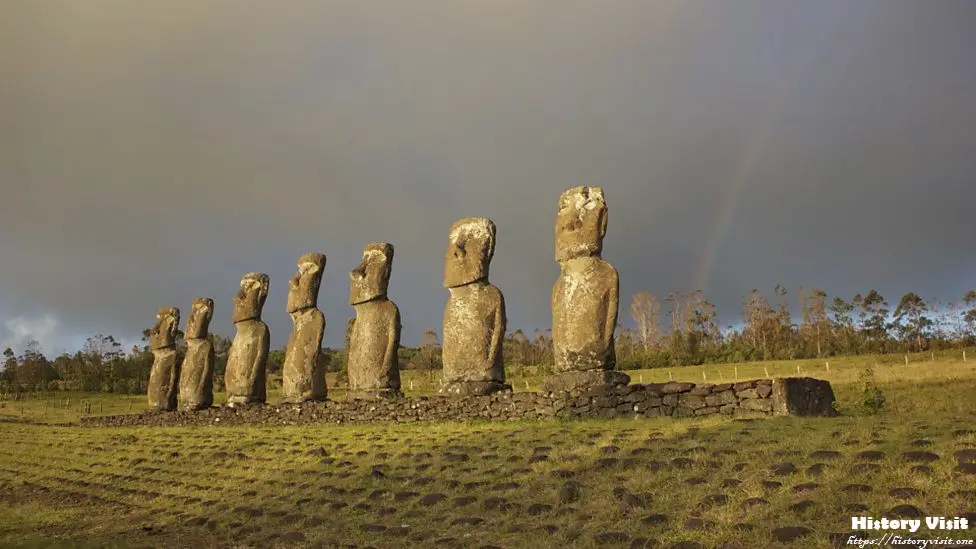
The construction of the Moai statues is a remarkable feat of prehistoric engineering. Carved primarily from volcanic tuff found at the Rano Raraku quarry, the statues were chiseled into shape using simple stone tools. The quarry itself is a fascinating site, with numerous incomplete statues providing insight into the carving techniques and stages of production.
Transporting the finished statues from the quarry to their intended locations across the island was a colossal task. The Rapa Nui people used a combination of log rollers, sledges, and ropes to move the statues, some of which weigh up to 82 tons. Recent theories suggest that the statues were “walked” to their locations using a sophisticated rocking motion, a method that required exceptional coordination and communal effort.
Once at their destination, the statues were erected on stone platforms called ahu, which served as ceremonial sites. Some Moai were adorned with pukao, cylindrical stone hats, adding to their grandeur. The construction process, from carving to erection, showcases the Rapa Nui’s advanced understanding of engineering and their ability to mobilize and organize large labor forces.
Symbolism and Purpose
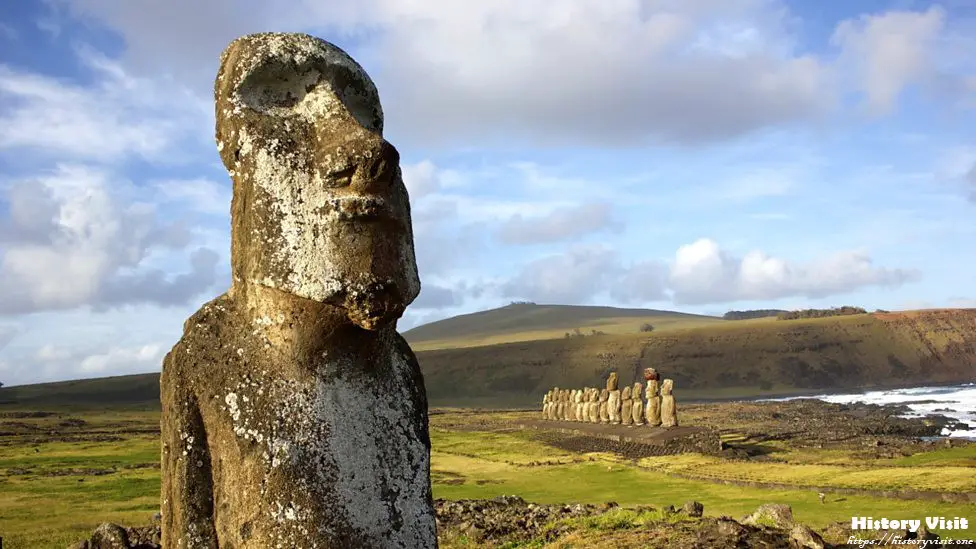
The Moai statues hold profound symbolic significance for the Rapa Nui people. They are widely believed to represent the deified ancestors of the islanders, embodying the spiritual and protective powers that these ancestors were thought to possess. The statues’ placement, often facing inland towards the villages, suggests their role in overseeing and safeguarding the community.
The concept of mana, a spiritual force believed to reside in both objects and people, is central to understanding the Moai’s purpose. The Rapa Nui believed that their ancestors’ mana could be harnessed through the statues, providing blessings and protection. The act of erecting Moai was not just a display of artistic skill but a deeply religious and communal endeavor aimed at ensuring the well-being of the clan.
The Moai also played a role in asserting social hierarchy and political power. The size and number of statues commissioned by a clan were indicative of its wealth and influence. As such, the construction of Moai was both a spiritual duty and a means of social competition, reflecting the complex interplay between religion and politics in Rapa Nui society.
Challenges and Theories

The creation of the Moai statues was not without its challenges. The process demanded significant resources, including wood for transporting the statues and food to sustain the labor force. Over time, the intensive construction activities, particularly the deforestation for transporting the Moai, led to severe ecological degradation on the island.
Several theories have been proposed to explain the decline in Moai construction and the eventual societal collapse of the Rapa Nui civilization. One prominent theory suggests that the overexploitation of resources, especially the deforestation, led to environmental collapse, which in turn caused social turmoil and famine. Another theory posits that European contact brought diseases and slave raids, exacerbating the existing societal strains.
Despite these challenges, the Rapa Nui people demonstrated remarkable resilience. The cessation of Moai construction and the eventual toppling of some statues may have been a response to the changing environmental and social conditions. Understanding these challenges provides valuable lessons on the sustainability and adaptability of human societies.
Modern Discoveries and Preservation
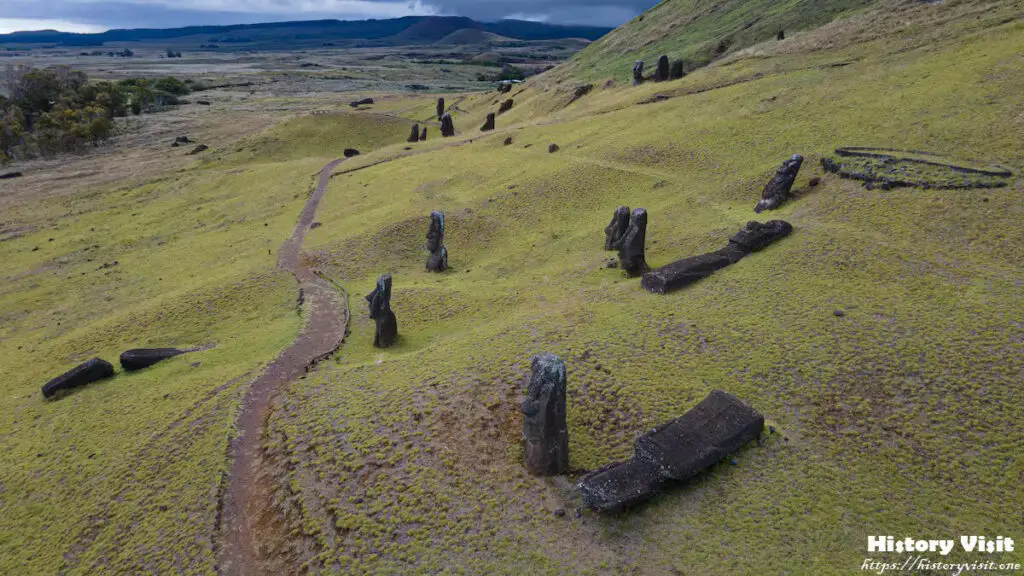
In recent years, archaeological research has continued to unveil new insights into the Moai and the Rapa Nui civilization. Excavations at Rano Raraku and other sites have revealed details about the statues’ construction techniques and the daily lives of the carvers. Advanced technologies, such as ground-penetrating radar and 3D modeling, have enhanced our understanding of the Moai and their cultural context.
Efforts to preserve and restore the Moai statues are ongoing, involving both local and international organizations. These initiatives aim to protect the statues from environmental damage, such as erosion and climate change, while also respecting and incorporating the cultural heritage and knowledge of the Rapa Nui people. The preservation efforts underscore the importance of safeguarding these ancient monuments for future generations.
Today, the Moai remain a powerful symbol of Rapa Nui identity and pride. The statues attract thousands of tourists each year, contributing to the island’s economy and raising awareness about the need to preserve its unique heritage. The continued study and conservation of the Moai are crucial for honoring the legacy of the Rapa Nui civilization and ensuring that these majestic guardians endure.
Conclusion

The Moai statues of Easter Island stand as enduring symbols of the Rapa Nui people’s ingenuity, spirituality, and resilience. These colossal figures, carved and erected with remarkable skill between 1400 and 1650, offer a window into the rich cultural and religious life of the Rapa Nui civilization. Understanding the history and significance of the Moai allows us to appreciate the complexity and achievements of this isolated yet remarkable society.
The challenges faced by the Rapa Nui, including environmental degradation and societal collapse, serve as poignant reminders of the delicate balance between human activity and ecological sustainability. The decline of Moai construction reflects the broader struggles of the Rapa Nui people, offering valuable lessons for contemporary societies facing similar challenges.
Preserving the Moai statues is not only about protecting ancient artifacts but also about honoring the cultural heritage of the Rapa Nui people. As we continue to study and conserve these magnificent statues, we ensure that the legacy of the Rapa Nui civilization remains alive, inspiring future generations with their story of creativity, resilience, and respect for their ancestors.


